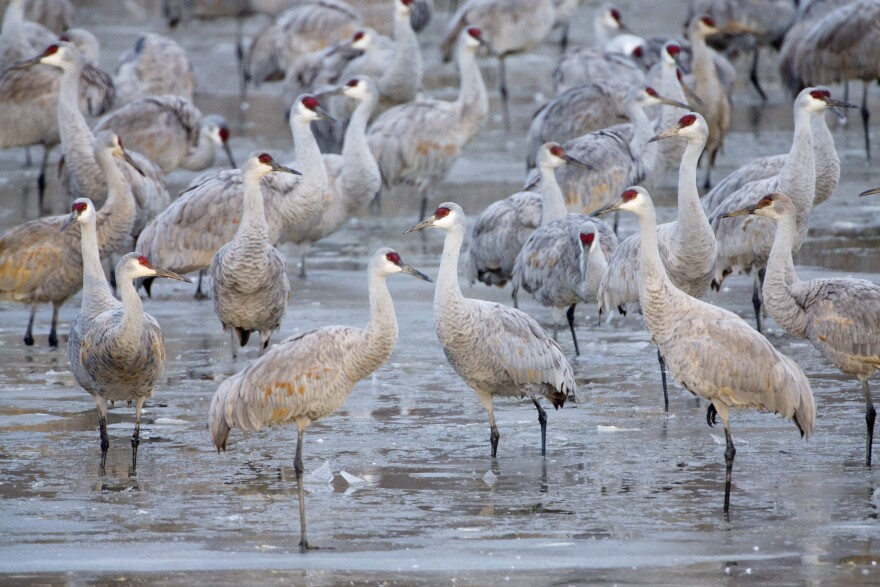This weekend people will watch hundreds, perhaps thousands, of Sandhill cranes land at Big Marsh Lake - about 30 minutes northeast of Battle Creek. It’s the 23rd annual Sandhill Crane & Art Festival hosted by the Michigan Audubon Society. We talked with the society's education coordinator Lisa Cain:
Cain says Sandhill cranes are believed to be Michigan's oldest species of bird. Scientists think it's remained unchanged for nine million years.
"They’re kind of like a nice living fossil for us to kind of see and experience," said Cain.
Sandhill cranes have a unique call and mating dance.
http://www.youtube.com/watch?v=R3PXWcOdpW4
(Video used with permission from Plumas Audubon Society)
Cain says they're also very large—between three to four feet tall. She says seeing them in a big group is awe inspiring.
"When you see them in those numbers it kind of gives you chills in the best possible way," said Cain. "It’s really something that I think—especially everyone from the area and from the state—should be able to experience at least once in their lifetime.
A hundred years ago, Sandhill cranes were in trouble. Cain says their numbers were dangerously low due to hunting and habitat loss. According to the Michigan Audubon Society, the Sandhill crane is still considered an endangered species in some states, like Ohio.
Big Marsh Lake is on the birds' migration path south. Michigan is a popular place for them to breed because they like to build their nests in marshy areas. Cain says it's important that the habitat at these stopover sites remains intact in order for the species to survive.



